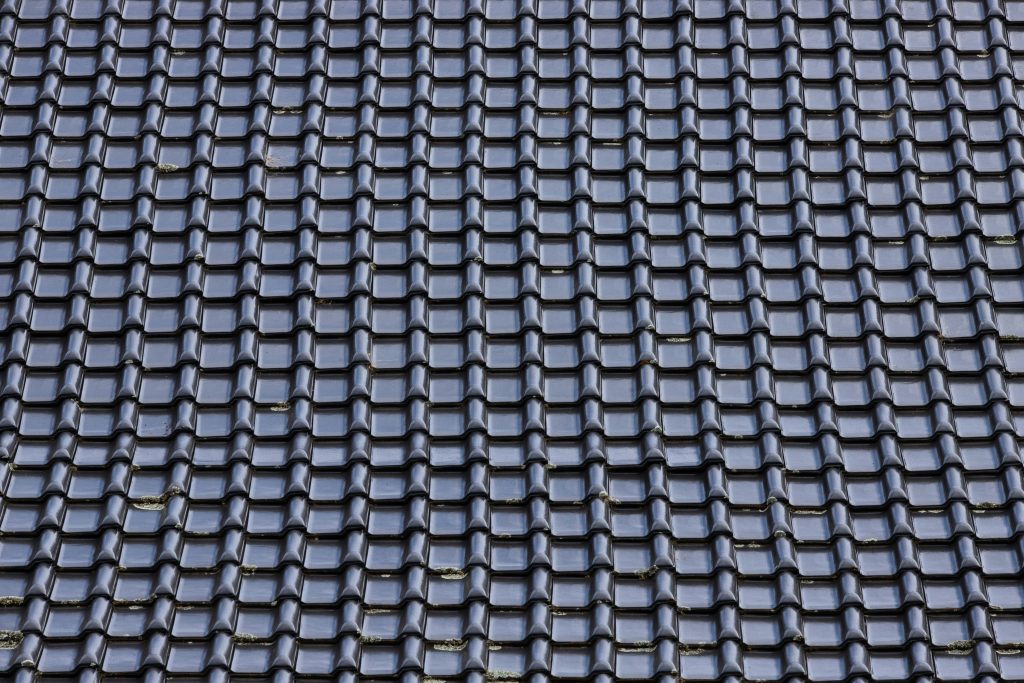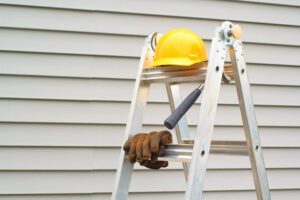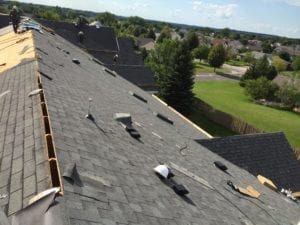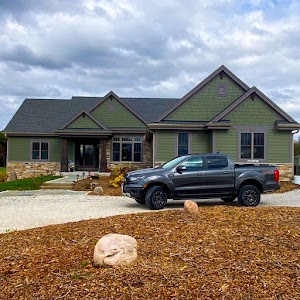Your metal roof should last between 40 to 70 years, assuming it’s installed correctly and maintained well. It withstands harsh weather, from heavy snowfalls to high winds, and offers protection against fires, especially in wildfire-prone areas. Compared to asphalt shingles or wood shakes, metal roofs require less upkeep and generally endure far longer. They’re also more cost-effective in the long run due to their durability and energy efficiency. Regular maintenance like clearing debris and inspecting for damage helps extend its lifespan even further. Exploring these details will reveal additional ways to maximize the longevity of your roof.
Average Lifespan of Metal Roofs
How long can you expect a metal roof to last? With proper installation, you’re looking at a substantial span of anywhere from 40 to 70 years. This longevity is one of the main reasons homeowners like you choose metal over other materials. It’s not just about durability; it’s about making an investment in your home that pays off over decades.
Metal roofs stand out due to their resilience. They’re crafted to withstand harsh weather, from heavy snowfall to high winds, and they don’t succumb to the common ailments that plague other roofing materials, like cracking or curling. Even better, they’re fire-resistant. In areas prone to wildfires or lightning strikes, a metal roof might give you an extra layer of protection that can be a real lifesaver.
You’ll also appreciate how low-maintenance metal roofs are. They don’t require the frequent repairs or replacements that other roofs often do. Once installed, there’s very little you need to do, which means more time and money for you to spend on other aspects of your life and home. So, if you’re planning for the long term, a metal roof is a choice you won’t regret.
Key Factors Affecting Durability
When you’re considering the durability of your metal roof, several key factors come into play.
You’ll need to think about how local weather conditions, regular maintenance, and the quality of installation techniques can impact its lifespan.
Additionally, using protective paint finishes can also markedly protect your investment from environmental elements.
Local Weather Conditions
Local weather conditions significantly impact the longevity of metal roofs. In regions with extreme temperatures, metal can expand or contract, potentially causing wear and structural damage over time. Heavy snowfall areas can strain a roof’s support system due to the weight of the snow. Coastal regions present a challenge because the salt in the air can accelerate corrosion unless the metal is adequately treated. High winds pose another concern, potentially lifting edges or panels that are not securely fastened. It is crucial to understand your local climate to gauge how well your metal roof will endure various elements.
Understanding your local climate is essential to predicting how well your metal roof will stand up to the elements.
Regular Maintenance
Routine maintenance greatly increases the lifespan of your metal roof. By regularly clearing debris, you’ll prevent buildup that can trap moisture and accelerate corrosion. It’s important to inspect your roof at least twice a year, especially after severe weather events. Look for signs of wear such as scratches or dents that can expose the underlying metal to the elements.
You should also make sure that all sealants and fasteners are intact. Over time, these can loosen or degrade, leading to leaks that compromise your roof’s structural integrity. Don’t forget to check for any signs of rust and apply a metal primer and paint as needed to protect against further damage. Regular checks and minor repairs can save you from costly replacements down the line.
Proper Installation Techniques
After ensuring regular maintenance, it’s equally important to focus on proper installation techniques to maximize the durability of your metal roof. When you’re hiring a contractor, make sure they’ve extensive experience with metal roofing. An expert will know how to properly handle and install the panels to prevent damages like denting or scratching, which can compromise the roof’s integrity.
They’ll also guarantee that every seam is correctly aligned and sealed, essential for preventing water infiltration. Incorrectly installed fasteners are a common failure point, so your contractor should use the right type and number of fasteners, placing them at precise intervals to withstand weather conditions. Remember, a poorly installed metal roof won’t just look bad; it’ll shorten its lifespan significantly.
Protective Paint Finishes
Protective paint finishes greatly enhance the durability of your metal roof by safeguarding against environmental damage. These specialized coatings act as a barrier against harmful UV rays, moisture, and corrosive elements. By choosing a high-quality paint finish, you’re not only preserving the roof’s aesthetic appeal but also extending its lifespan.
You’ll find that these finishes come in various types, such as acrylic, silicone, and polyurethane, each offering different levels of protection and longevity. It’s important to select a finish that’s suitable for your local climate and environmental conditions. Additionally, make sure it’s applied correctly to achieve the maximum benefit.
Regular maintenance, including periodic reapplication of the finish, can further prolong the life of your metal roof.
Comparisons With Other Roof Types
When evaluating a new roof, it’s important to compare metal roofing with other popular materials like:
- Asphalt shingles
- Wood shakes
- Clay tiles
Each type offers distinct advantages and drawbacks in terms of durability, cost, and maintenance requirements.
Let’s explore how metal roofs stack up against these alternatives to help you make an informed decision.
Metal Roofing vs. Asphalt Shingle
Metal roofs often outlast asphalt shingles, providing a more durable and long-lasting roofing option. While you might pay more upfront for a metal roof, you’ll find it’s a worthwhile investment. Metal roofs can last 40 to 70 years, whereas asphalt shingles typically need replacing every 15 to 30 years. That means you’re likely to replace an asphalt shingle roof twice, or even three times, during the lifespan of one metal roof.
Additionally, metal roofs offer better resistance to harsh weather conditions like high winds, heavy snow, and torrential rains. They’re also fire-resistant and can help keep your home cooler by reflecting solar heat, saving you money on cooling costs in the summer months.
Metal Roofing vs. Textured Asphalt Shingle
While standard metal roofs offer numerous benefits, textured asphalt shingles present an alternative with distinct aesthetic and functional advantages. If you’re looking for a roof that mimics higher-end materials like slate or wood shakes, textured shingles could be the way to go. They’re not only attractive but also provide enhanced shadow effects and dimensional appearance, which often appeals to homeowners seeking a more luxurious look.
Textured asphalt shingles generally cost less than metal roofs and are easier to install and repair. However, they don’t last as long. You’re looking at about 15-30 years compared to metal’s 40-70 years. Plus, metal roofs offer better fire resistance and energy efficiency, which can save you money in the long run.
Metal Roofing vs. Wood Shingles/Shakes
Comparing metal roofing with wood shingles or shakes, you’ll find significant differences in durability and maintenance needs. Metal roofs often last 40 to 70 years, far outstripping the 20 to 30-year lifespan of wood shingles. You’re also looking at a material that’s much more resistant to fire, rot, and insect damage. While metal can dent during hailstorms, wood shingles are prone to breaking and require frequent replacements of individual shingles.
In terms of upkeep, metal roofing is relatively low-maintenance. You won’t have to worry about mold or decay, which are common issues with wood in damp climates. Additionally, the reflective properties of metal can help keep your home cooler, potentially lowering your energy bills.
Metal Roofing vs. Clay or Concrete Tile
Shifting focus to another popular option, consider how metal roofing stacks up compared to clay or concrete tiles. Both offer great durability, but there are distinct differences.
Metal roofs typically last 40 to 70 years, while clay and concrete tiles can endure for over a century. However, metal is much lighter, which reduces strain on your home’s structure and can simplify installation. It’s also more weather-resistant, handling high winds better than the heavier tiles.
Regarding cost, metal roofing is generally less expensive both in initial investment and maintenance. Tiles, though, may offer better insulation and a classic aesthetic that appeals if you’re aiming for a specific style. Each choice has its merits, depending on your priorities and climate.
Essential Maintenance Practices
To maximize the lifespan of your metal roof, you should regularly clear debris and inspect for any signs of damage. Over time, leaves, branches, and other elements can accumulate, potentially retaining moisture which may lead to rust or corrosion. It’s best to schedule cleaning at least twice a year, ideally in the fall and spring.
Additionally, make sure your gutters and downspouts are free from obstructions. Clogged gutters can cause water to pool on your roof, increasing the risk of damage. It’s important to keep these elements functioning properly to ensure efficient water runoff.
You’ll also want to trim any overhanging tree branches that could scratch the roof during windy conditions or drop debris that accumulates. This not only protects the roof material but also discourages animals from nesting near your roof.
Another key practice is to check for loose or damaged fasteners and seams. Over time, fasteners may become loose due to thermal expansion and contraction. Tightening these elements can prevent water from seeping under the roof panels.
Addressing Common Issues
Addressing common issues promptly can greatly extend your metal roof’s durability and performance. You’ll encounter a few typical problems that, if managed well, won’t compromise the longevity of your roofing.
Firstly, watch out for corrosion, especially if you live in a coastal area where salt spray is prevalent. Applying a protective coating can shield the metal from corrosive elements. Make sure you’re using products specified for metal roof treatment to avoid damaging the material.
Another issue is the accumulation of debris such as leaves, twigs, and dirt. These can retain moisture against the metal, leading to rust. Regularly cleaning your gutters and roof surface will prevent this buildup and protect against water damage.
Scratches and dents from hail or branches are also common. While minor scratches might seem harmless, they can expose the underlying metal to moisture and air, leading to rust. It’s wise to repair these damages quickly. Using touch-up paint designed for metal roofs can cover and seal these flaws.
Lastly, make sure the fasteners remain tight and the seals intact. Loose fasteners can lead to leaks, while broken seals might cause lifting during high winds. Checking these elements annually helps prevent potential problems from escalating.
Conclusion
You’ve seen that a metal roof can last up to 70 years with proper care. Factors like installation quality, environment, and maintenance play huge roles in its longevity.
Compared to other roofing types, metal stands out for its durability and minimal upkeep requirements. By regularly checking for any issues and addressing them promptly, you can guarantee your metal roof remains in top condition, protecting your home for decades.
Always consider a metal roof as a smart, long-term investment.







